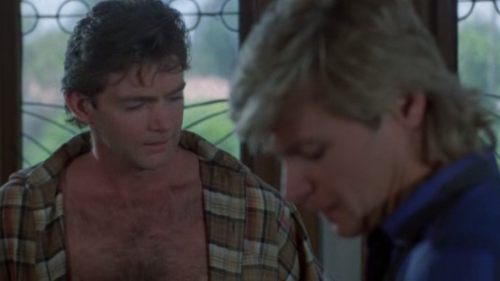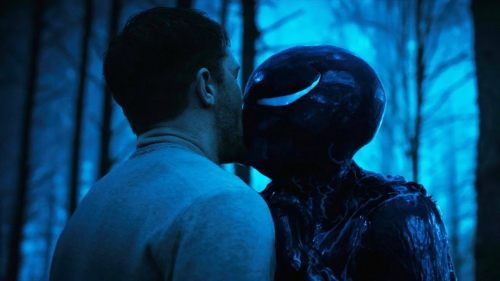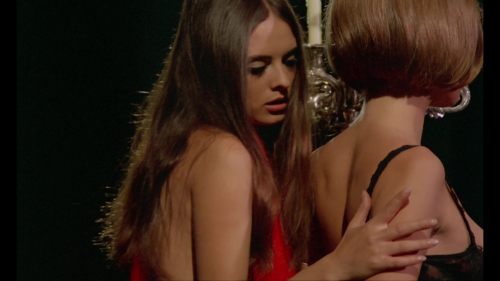Queer Underworld: SEED OF CHUCKY (2004)
It’s a common adage that, in fiction, the monster is never just a monster. Horror, science fiction, and fantasy are the venues through which we explore ideas through metaphor and allegory, sometimes unintentionally through the lens of an audience who connects with a work’s themes in a manner specific to them. Such is the case with all manner of LGBTQ cinema, which has often relied on metaphor to smuggle queer themes into cinemas or been subject to queer interpretations after the fact. We at Birth.Movies.Death want to give those queer readings of genre films a voice. This is Queer Underworld.
As awareness of transgender identities rises, so too does the demand for transgender representation in the media we consume, both from within the transgender community and among allies who understand the necessity of that representation. The progress in gaining that representation has come in fits and starts, often just as misguided as it is well-intentioned, but there has been definitive progress in high profile casting of transgender women to play transgender characters. (Transgender men haven’t gotten nearly as much or enough attention, but that’s a discussion for another day.) But what about those in the trans community who don’t identify with the gender binary? Who are our representatives in the annals of pop culture? Sure, various actors have come out at non-binary, such as Ruby Rose and Ezra Miller, but it’s a stretch to attribute that identity to their roles, which are usually explicitly coded as female and male, respectively, and make no reference to non-binary identity. It wasn't until just a few weeks ago that we could easily point to a non-binary actor playing a non-binary role in a major motion picture, with Asia Kate Dillon's portrayal of The Adjudicator in John Wick: Chapter 3 taking that noteworthy yet anomalous distinction. Well, you clicked on the article, so by now you’ve already figured out that Seed of Chucky is the unlikely venue through which we might find another non-binary character.
And their name is Shitface.
Or at least, that’s the name with which we are introduced to the film’s protagonist, a doll mysteriously brought to life by a voodoo amulet and kept imprisoned as a sideshow attraction. Condemned to life as a carnival freak who is not “anatomically correct” due to their androgynous features and lack of visible genitalia, “Shitface” (Billy Boyd) only has the amulet, a "Made In Japan" brand on their wrist, and nightmares wherein they commit murder as the clues to his origins. On the TV one day, they see Chucky (Brad Dourif) and Tiffany (Jennifer Tilly) repurposed as animatronics on a film set and realize that these must be their parents, based on the identical "Made In Japan" on Chucky’s wrist. So they run away to Hollywood and revive Chucky and Tiffany with the power of the amulet, so beginning their journey to discover who they truly are.
Now, through the convoluted circumstances of Bride of Chucky that this film doesn’t really get into, the doll is clearly the offspring of Chucky and Tiffany. And through these parental figures, this doll seeks guidance on who they are meant to be. The only problem is that Chucky and Tiffany can’t seem to agree on what the gender of their offspring actually is. Chucky is adamant that they have a boy on their hands, naming the doll “Glen,” while Tiffany is convinced of “Glenda’s” femininity. Through Glen/da, Chucky and Tiffany are engaging in an age-old trope of parental practice: the projection of self onto a child of one’s own gender.
However, in order to determine which of them is correct in ascribing Glen/da’s identity, the murderous couple hatch a plan to artificially inseminate actress Jennifer Tilly (in a hilarious bit of a double-casting) so as to allow Tiffany to possess her and raise whatever offspring she produces as either Glen or Glenda, depending on the infant’s assigned sex at birth. And with this being a Chucky movie, there are of course plenty of vulgar gags and kills along the way – including one of noted gender-fuckery enthusiast John Waters – but the heart of the film rests in Glen/da’s realization of their own identity independent of Chucky and Tiffany.
In light of their newfound roles as parents, Tiffany attests that she and Chucky should abandon their addiction to killing so as to set a good example for their child, only Chucky is less than eager and treats his murderous impulses as a matter of masculine discretion, subject to “boys’ nights out” and father-son bonding with “Glen.” And yet, though Glen/da’s default androgyny is more masculinely coded by their baggy shirt and pants, they express a distinct aversion to killing, regretting their role in murdering Waters' paparazzi character almost immediately and chalking it up as an accident. So what we have here is Tiffany’s more stereotypically feminine rejection of violence expressing itself in a gendered presentation that Chucky projects his own stereotypically violent masculinity onto. (And yes, Tiffany does kill throughout the film, but the attempted rejection as a part of her gendered coding is more to the point.)
However, a late reveal in the film shows a doll in a dress killing Jennifer Tilly’s assistant by setting her on fire, only for that doll to be a fully made-up “Glenda” who revels in the consequences of her violence. In this sense, gendered expression is a form of roleplay for Glen/da, wherein manner of dress is a gateway to varied parts of their personality, only that expression does not necessarily have to line up with the traditionally coded genders of their parents. As Tiffany points out, some people choose not to live as either binary gender because such a binary doesn't line up with who they truly are. Chucky, of course, rejects that idea, which acts as part of the impetus for a final confrontation between Chucky and Glen/da where the latter figuratively dismantles their father’s toxically masculine worldview by literally cutting off his limbs with an ax.
I would be remiss not to point out how the film’s finale kinda whiffs it on the non-binary gender messaging. Rather than have Jennifer Tilly give birth to one child in which Glen/da can express any variety of gendered presentations and behaviors, the film instead has her give birth to twins assigned male and female who ultimately come to share the split personalities of Glen and Glenda. Though these personalities are in themselves a subversion of their assigned gender as previously discussed, splitting them between a pair of bodies carries the uncomfortable implication that Glen/da’s non-traditional gender is the result of multiple personalities and, by extension, can be read as a form of mental illness on the same level of their parents’ homicidal compulsions. It’s not a deal-breaker, particularly considering that this film’s primary purpose is to act as a trashy thrill in a franchise built entirely on trashy thrills, but it works against the previous culmination of Glen/da’s arc as a singular entity both molded by and entirely distinct from the gendered influences of their parents.
Seed of Chucky may not be the meditative piece of high art that institutionally respectable gender theorists would like to hold up as an examination of non-binary gender identity, but it still remains one of the few examples of popular culture to take a stab at treating non-binary trans folks with any sort of acknowledgment, let alone a level of respect or introspection. It’s not perfect, but as a non-binary person myself, I can certainly see a bit of myself in Glen/da and applaud Chucky franchise writer-director Don Mancini for attempting to bring a non-binary experience to the screen. It just sucks that one of my only pieces of direct representation has to be in a doll.



